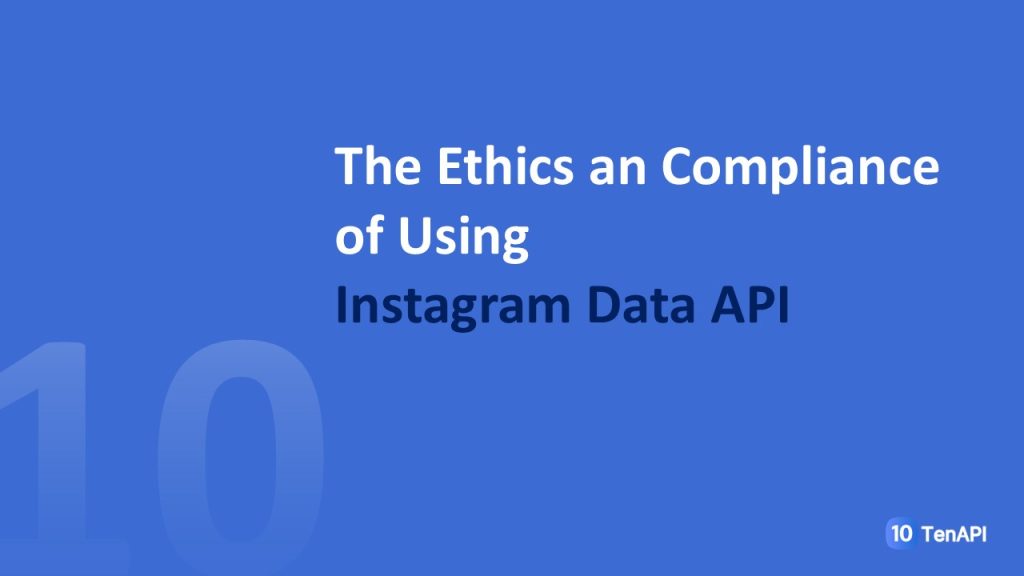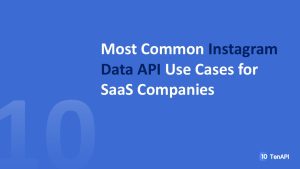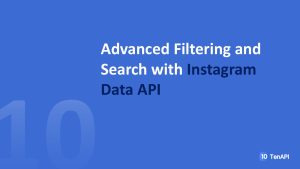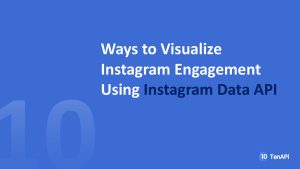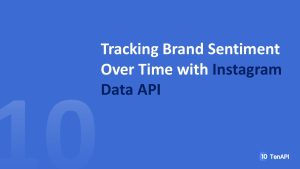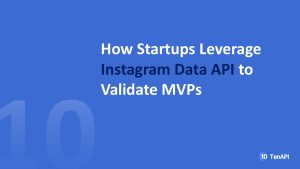In today’s data-driven world, Instagram has become a treasure trove of insights—whether you’re a marketer, developer, influencer, or business owner. But here’s the thing: just because we can access and analyze that data doesn’t always mean we should. There’s a growing spotlight on the ethics and compliance involved when using the Instagram Data API, and ignoring them could land you in some hot water—legally and morally.
So, if you’re planning to build an app, launch a service, or simply analyze Instagram data, you need to understand the ethical and legal boundaries.
Understanding Instagram’s Data API
What is Instagram’s Graph API?
The Instagram Graph API is Facebook’s official gateway to access Instagram data in a structured and secure way. It allows you to pull in things like profile info, post data, hashtags, and insights—but only for business or creator accounts that have explicitly authorized your app.
What Kind of Data Can You Access?
With the proper permissions, you can:
-
Access media (images, videos)
-
Get user insights (reach, engagement)
-
Pull in comments, mentions, tags
-
Interact with DMs (limited)
But again, this isn’t a free-for-all. You can’t just grab any user’s data without their consent.
Public vs Private Data: Know the Difference
Public data = fair game (with limitations).
Private data = stay away unless you have consent.
Many developers confuse what’s technically possible with what’s legally and ethically acceptable.
The Legal Framework Around API Usage
Instagram’s Terms of Use & Developer Policies
Instagram lays out strict developer guidelines. Violating them could result in:
-
Your app being blacklisted
-
Your API access being revoked
-
Legal consequences
Read them carefully. Twice.
GDPR and Data Privacy
If you’re handling EU users’ data, GDPR applies. This means:
-
You need clear user consent
-
You must let users delete their data
-
You must document your data usage
CCPA and User Consent
For users in California, CCPA mandates:
-
Clear opt-outs
-
Right to know what’s collected
-
Right to request deletion
These laws aren’t optional. They carry hefty fines.
Core Ethical Principles in API Usage
Transparency with Users
Would you be okay if someone did the same thing with your Instagram data? If not, you’re probably not being transparent enough.
Consent is Not Optional
Always ask. Always disclose. Whether it’s in your terms of service or an in-app pop-up, let users know exactly what data you’re using and why.
Data Minimization – Just Because You Can Doesn’t Mean You Should
Don’t collect everything just because the API lets you. Only gather what’s necessary. Minimalism is not just trendy—it’s ethical.
Common Violations and Grey Areas
Scraping Data Illegally
Scraping public profiles using unofficial tools or bots? That’s not just against Instagram’s terms—it’s likely illegal in many regions.
Misusing User Analytics Without Disclosure
Using someone’s post data to profile their behavior or target them in ads without informing them is a big red flag.
Third-Party Data Resale
Selling data or insights derived from Instagram to third parties without consent? That’s crossing into dangerous territory—ethically and legally.
How to Build Ethical Instagram Tools
Always Inform and Get User Consent
Make it easy and obvious for users to understand:
-
What data you collect
-
How it’s stored
-
Who it’s shared with
Show Users What Data You’re Using
Even better: give users a dashboard where they can see and control their data.
Provide Clear Opt-Out Options
Users should always have the right to leave. Make it simple, fast, and respectful.
The Role of Compliance Tools and Auditing
Internal Checks and Logging
Keep logs of:
-
When and how data is collected
-
What permissions were granted
-
Who accessed the data
These logs help protect you too.
Automated Compliance Verification Tools
Use tools like:
-
Data protection impact assessments (DPIA)
-
Privacy management platforms (OneTrust, TrustArc)
Keeping Up with Instagram API Changes
APIs evolve. Make sure you’re not using deprecated endpoints or outdated scopes that violate new rules.
Penalties and Risks of Non-Compliance
Account Bans and API Access Revocation
Instagram doesn’t play around. Violate their rules, and you could lose your app and account.
Legal Fines and Data Breach Consequences
GDPR fines can go up to €20 million or 4% of annual revenue. You don’t want that smoke.
Reputational Damage
Once trust is broken, it’s hard to earn back. Users talk. So do the press.
Case Studies: Lessons from Past Violations
Cambridge Analytica
A stark reminder of what happens when data is abused at scale. Massive fines, company shutdowns, and loss of public trust.
Instagram Third-Party Apps Shutdowns
Several third-party analytics apps were quietly removed after violating data policies. No warning. Just gone.
What We Can Learn
Ethics isn’t just a checkbox. It’s a foundation. Build your app on it, or risk losing everything.
Ethical Considerations for AI and Automation
Bot Behavior on Instagram
Auto-follow bots, mass liking, spammy DMs—they’re not just unethical. They violate Instagram’s policies and hurt the user experience.
Auto-Posting and Interaction Ethics
Auto-posting can be helpful—but always with permission. Auto-commenting? That’s a no-go.
Avoiding Manipulation Algorithms
Designing your tool to manipulate engagement or visibility crosses a major ethical line.
Best Practices for Developers and Businesses
Conducting Ethical Audits
Review your data flows. Ask:
-
Are we collecting only what we need?
-
Are users aware?
-
Are we storing it securely?
Involving Legal and Ethics Teams Early
Get them involved from the first prototype. Avoid costly reworks later.
Educating Teams on Compliance
Make ethics training part of your dev culture. It’s not just for HR.
Future of API Ethics and Data Regulation
Stricter Global Regulations Incoming
Expect more countries to follow the EU and California with stricter data laws.
Instagram’s Evolution Toward Privacy-Centric API
Future versions of the API will likely limit access even more, pushing developers toward user-first design.
The Role of Community Watchdogs
Tech watchdogs and whistleblowers are becoming more active. They keep developers and platforms accountable.
Conclusion
Using the Instagram Data API is a powerful tool—but with great power comes great responsibility. Whether you’re building a content automation tool, analytics platform, or CRM solution, you need to approach data with care. Being compliant isn’t just about avoiding bans or lawsuits—it’s about building trust. And trust is the currency of the modern digital world.
Always ask yourself:
If I were the user, would I be okay with this?
If the answer is no, it’s time to rethink your approach.
Frequently Asked Questions (FAQ)
1. Is using Instagram’s API legal?
Yes, as long as you follow their developer policies and have user consent.
2. Can I access private user data through the API?
No. You can only access data users have explicitly shared with your app.
3. What should I do if my app violates Instagram’s policy?
Pause access immediately, correct the issue, and re-submit for review if necessary.
4. How can I ensure I’m GDPR compliant?
You need to obtain clear consent, inform users about data usage, and offer data deletion options.
5. Do users need to know what I do with their Instagram data?
Absolutely. Transparency isn’t optional—it’s legally and ethically required.

